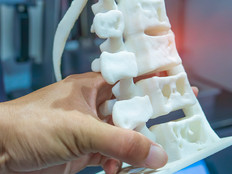With their speed and maneuverability, drones have long captured attention for their potential to deliver shopping orders and photograph the world from above. But the machines can also serve a medical purpose by shuttling drugs, defibrillators and other equipment to emergency sites or care facilities.
Improvements in battery life, GPS navigation and artificial intelligence functions are making drones a more practical option in healthcare, says Dr. Daniel Kraft, faculty chair for medicine and neuroscience at Singularity University, an executive education program that also serves as a business incubator and consultancy service.
Energy is high: Research firm Global Market Insights forecasts the medical drones market, valued at $88 million in 2018, will hit $399 million by 2025.
“It’s in this area now where things have converged to make drones fast and cheap, and they meet an important unmet need in many parts of the world,” Kraft says, noting that the devices can handle obstacles such as mountain ranges and road closures.
The Technology Is Proving to Be Ready for Action in Healthcare
In Nevada, drone maker Flirtey is working with the state’s Regional Emergency Medical Services Authority on a plan to deliver defibrillators after certain 911 calls are placed. Dispatchers could offer instructions for use via phone.
The drones, each about the size of a large laptop, one day could bring other items to underserved areas, says Adam Heinz, the authority’s executive director of integrated health.
“Maybe you just need a drone with a pack of antibiotics,” Heinz says, “or a drone that has the ability to provide a telemedicine device that can be looped into our communication center where a physician or provider is standing by so they can treat you right in the comfort of your own home.”
WakeMed Health & Hospitals in Raleigh, N.C., is using the Matternet M2 drone system in partnership with the UPS Flight Forward delivery program to conduct hourly runs of blood samples from a large outpatient surgery center to a lab at its flagship hospital about two-thirds of a mile away.
835,000
Federal Aviation Administration, “FAA Aerospace Forecast, Fiscal Years 2019-2039,” April 2019
Source: The number of commercial drones projected to operate in the U.S. by 2023
WakeMed’s medical supply chain needs were increasing, and traditional couriers took up to an hour to complete the time-sensitive deliveries, says Dr. Stuart Ginn, medical director of WakeMed Innovations.
Drones can do so in three minutes, according to Andreas Raptopoulos, CEO of Matternet, which is prompting WakeMed to expand its use of drones.
READ MORE: Learn how tech-equipped ambulances can expedite stroke care while in transit.
Manufacturers Continue to Assess Potential Roadblocks
Ginn, who is also a pilot, says he would like to see drone systems become more autonomous so one technician could control multiple devices if needed.
Theft is also a concern, says Will Stavanja, chief technical officer at AirBox Technologies, which is testing its DroneX fleet for medical deliveries in the Caribbean. “Right now, most drones land, drop the package and leave,” says Stavanja, whose team has developed smart mailboxes for secure delivery.
Addressing that risk will be key to determining whether drones can handle sensitive cargo. “You want a very high degree of certainty,” Kraft says. “It’s one thing if you lose a urine sample or a blood sample; you can get another one. It’s another to lose an organ.”











